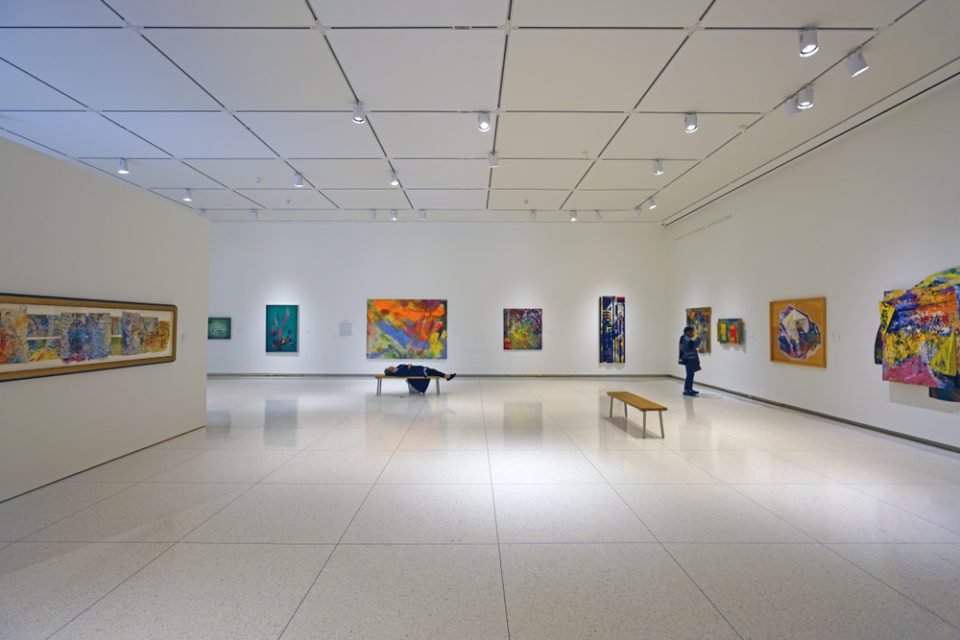Harnessing the power of the Internet of Things (IoT) is not limited to innovating conventional systems. For example, IoT can be useful for institutions such as museums and art galleries as well.
In museums, IoT can be helpful to preserve the past, culture, and heritage. Technology can help protect priceless artifacts by particularly sensing the environment surrounding the object.
Depending on the artifacts, one can identify which environment is essential to preserve them. Monitoring the environment can facilitate the ideal conditions for art preservation, to further create a massive difference in longevity.
In such a way, technology can ensure the protection of most of the valuable items.
Technology & Potential For Art Preservation
Museums and art galleries are filled with various artifacts and objects. Some of those objects are extremely old, thus their material properties might be wearing out. Therefore, it is crucial to provide them with a suitable environment.
Technology can help regulate an environment that can sustain these artifacts. New York’s Metropolitan Museum of Art is one of the early adopters for such an art preservation method.
Implementing technology for art preservation is easy considering that it is affordable, doesn’t affect the audience experience, and such invaluable artifacts are worth the investment.
How Does Art Preservation Systems Work?
There are few critical environmental parameters that can affect the art based on its material properties. These material properties may vary for a particular art.
However, there are many common properties that one needs to take into consideration. Here are the few properties which are crucial for museum art preservation.
- Temperature sensor:
Temperature is an essential quality for objects and specimens. As such, a temperature sensor can be helpful to monitor the ambient temperature around the object. In case if the temperature is out of line, museum authorities will receive an emergency alarm. Therefore, one can monitor and eventually regulate the temperature for those artifacts.
- Humidity sensor:
Humidity, just like temperature, has effects on various artifacts. These artifacts might be made of fabric, fossils, metal, or wood. Humidity has a different impact on different materials. For instance, humidity or moisture in the surroundings can dilate the fabric and ruin the artifact. Therefore, it is important to measure ambient humidity.
- Light sensor:
A light sensor is essential to identify that sensitive artifacts are only exposed to a particular light. Especially, it is crucial for fabric artifacts where light can result in the loss of colors for the object. One can even block or use artificial light to better preserve the artifacts.
- Object detection sensor:
These artifacts and objects are priceless. Therefore, they are at a constant threat of theft. Sensors such as IR sensors can act as a key to monitor if any object is not in its place. That way, museums can secure artifacts against any fall, tampering, or theft.
- Computer vision:
Computer vision is a key to next-generation museum protection. Artificial Intelligence and Edge Processing can be helpful to automatically monitor objects 24×7. It can automatically identify any triggers that can cause harm to these artifacts.
Other Ways Technology Can Add Value To Museums
Fire safety systems have been a part of museums and other institutions through the years. Over time, technology has matured to now focus on other environmental parameters as well. Similarly, technology will further evolve to support these institutions beyond just art preservation.
Similar to other industries, remote control, access control, and energy consumption monitoring are few other areas where museums can evolve.
In the future, museums can create more value for visitors by allowing IoT wristbands as part of the membership toolkit. Art galleries can track the audience gathered around particular artifacts to organize the indoor navigation & placements better. Art galleries can also set up reminders for curation and maintenance.
Therefore, it makes the job of art preservation easier for the staff members and nullifies the scope of human errors. All of these applications combined can significantly reduce operational costs. More than that, technology can help save priceless heritage and antiques as the critical advantage.
In return for engineering investments, technology can increase revenue with a better customer experience.
Curated Conclusion
Wireless sensor networks are heavily influencing many different applications. Art preservation is one such application where technological implementation is viable, easy, and low-risk. Art preservation can support museums or art galleries to focus on critical operational areas.
Therefore, enabling them to focus on sales, customer experience, and museum safety. Art prevention is one of those applications that prove that IoT can expand and help various industries.
As a result, these particular subset applications together can build the smart city ecosystem.
Develop great IoT solutions with high quality software, devices and infrastructures. Contact us!


